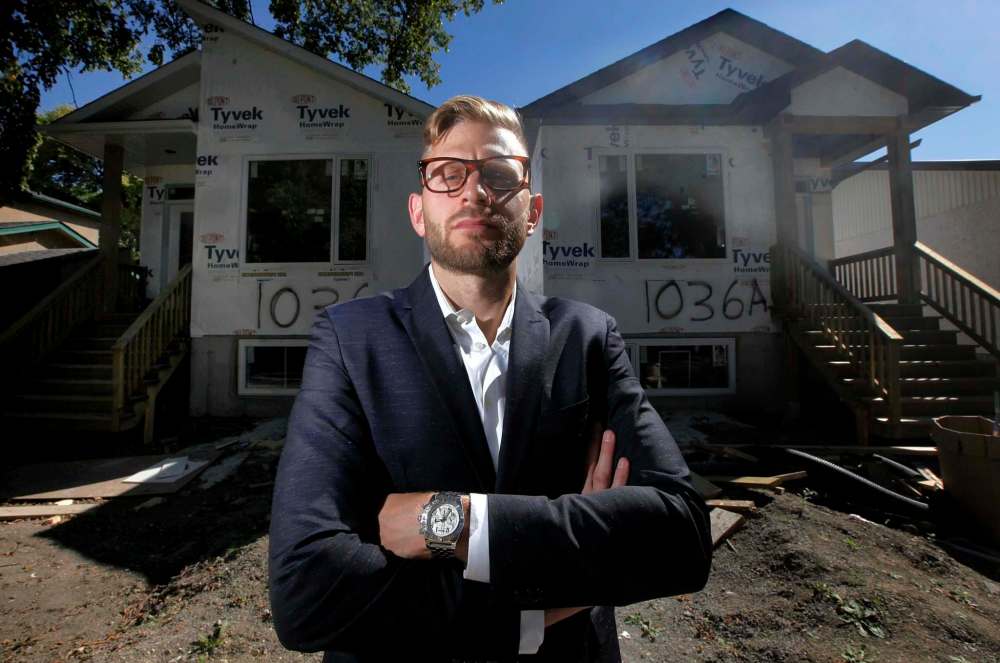Infill homes: a risk analysis
Developers weigh building in established neighbourhood versus new subdivision
Advertisement
Read this article for free:
or
Already have an account? Log in here »
To continue reading, please subscribe:
Monthly Digital Subscription
$0 for the first 4 weeks*
- Enjoy unlimited reading on winnipegfreepress.com
- Read the E-Edition, our digital replica newspaper
- Access News Break, our award-winning app
- Play interactive puzzles
*No charge for 4 weeks then price increases to the regular rate of $19.00 plus GST every four weeks. Offer available to new and qualified returning subscribers only. Cancel any time.
Monthly Digital Subscription
$4.75/week*
- Enjoy unlimited reading on winnipegfreepress.com
- Read the E-Edition, our digital replica newspaper
- Access News Break, our award-winning app
- Play interactive puzzles
*Billed as $19 plus GST every four weeks. Cancel any time.
To continue reading, please subscribe:
Add Free Press access to your Brandon Sun subscription for only an additional
$1 for the first 4 weeks*
*Your next subscription payment will increase by $1.00 and you will be charged $16.99 plus GST for four weeks. After four weeks, your payment will increase to $23.99 plus GST every four weeks.
Read unlimited articles for free today:
or
Already have an account? Log in here »
Hey there, time traveller!
This article was published 11/09/2017 (2982 days ago), so information in it may no longer be current.
Infill residential development is the way of the future for Winnipeg — or not.
Two housing industry officials, one a real estate agent and the other a developer, have different opinions about whether Winnipeg is on the cusp of a new era in infill residential development.
Jon Blumberg, a residential and commercial agent with Monopoly Realty who has been working closely with one local infill developer, said he’s seeing a growing demand for new, affordable single-family homes in established neighbourhoods.

He cites a recent City of Winnipeg report that predicts demand for infill housing will be high for the foreseeable future.
However, Bruce Balliet, development manager for TriWest Construction Inc., said most established home builders continue to be leery of doing single-family infill projects because they’re riskier than building in a new subdivision. He doesn’t think that will change unless city officials offer incentives to help reduce the risk.
Blumberg said he’s basing his opinion on first-hand experience. He said the developer he has been working with for the last couple of years — Waterside Development Corp. — has been building as many as a dozen single-family infill homes a year over the last few years in established neighbourhoods such as St. Vital, Fort Garry and St. James. The six or eight homes it currently has under construction include two bi-level homes being built on side-by-side lots on Royse Avenue in West Fort Garry.
He said they are about 900 square feet in size, with two bedrooms and one bathroom if the basement isn’t developed, and three bedrooms and two bathrooms if it is developed.
They’re usually on 25-foot-wide lots, and most are priced from $295,000 to $310,000.
“On average, most of the homes are selling within two to three weeks… sometimes even less.”
He said buyers tell him they love the idea of being able to buy a new home in a mature neighbourhood.
“They’re not living in a construction zone for five years like in the new subdivisions.”
Also, with a new home, they don’t have to worry about having to replace the roof or the windows or the furnace for a decade or more, he said.
Another advantage of buying a new infill home in a mature neighbourhood is they don’t have to pay the City of Winnipeg’s controversial new growth fee, which came into effect May 1.
Although the city has said it may extend the fee to include infill developments, for now it only applies to homes built in new or emerging areas of the city.
It adds about $5 per square foot to the cost of the home, and is intended to help offset the costs of building new infrastructure to service these new neighbourhoods.
Blumberg predicted that alone has more developers considering infill projects as an attractive alternative to building in new subdivisions. But he also noted that in its residential infill strategy, which was released earlier this year, the city also says it wants to see more infill development because it makes more efficient use of existing services.
It predicts Winnipeg’s population is expected to grow by more than 200,000 by 2040, and if developers continue to build infill homes at the rate they have in the past five years, more than 77,000 will be built by 2040. That’s an average of nearly 1,400 per year.
“That’s a lot of infill units,” he said.
He said Winnipeg has one of the oldest housing stocks in the country, with a lot of homes needing to be replaced.
History
Updated on Monday, September 11, 2017 7:53 AM CDT: Adds photo

